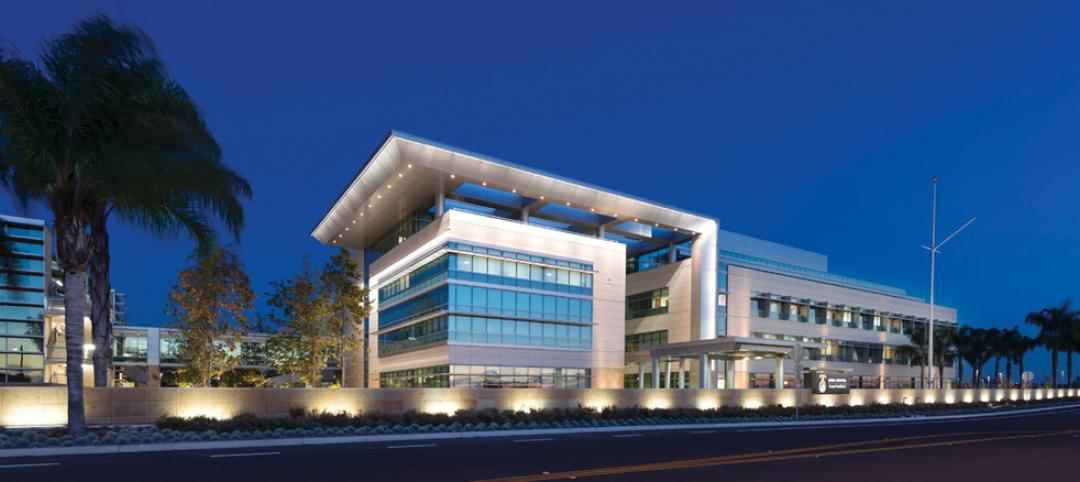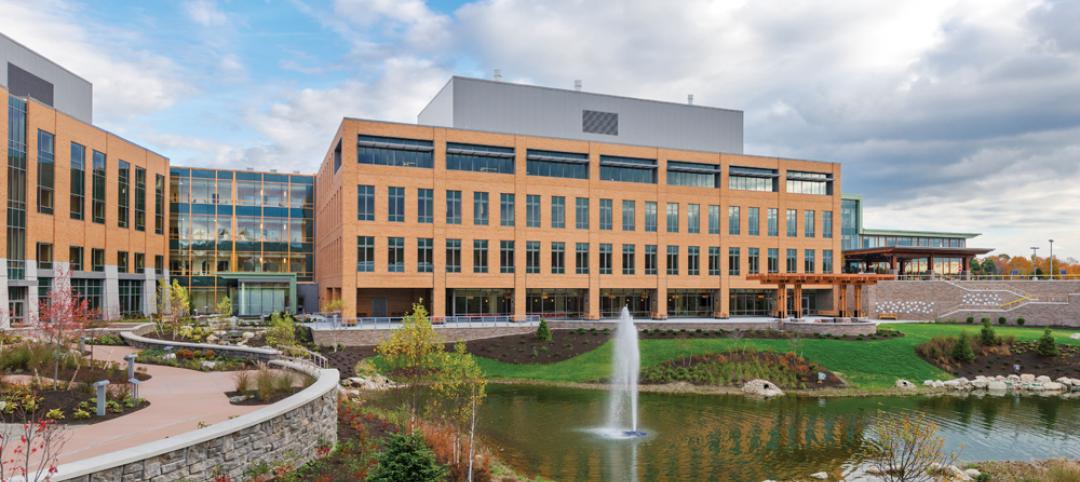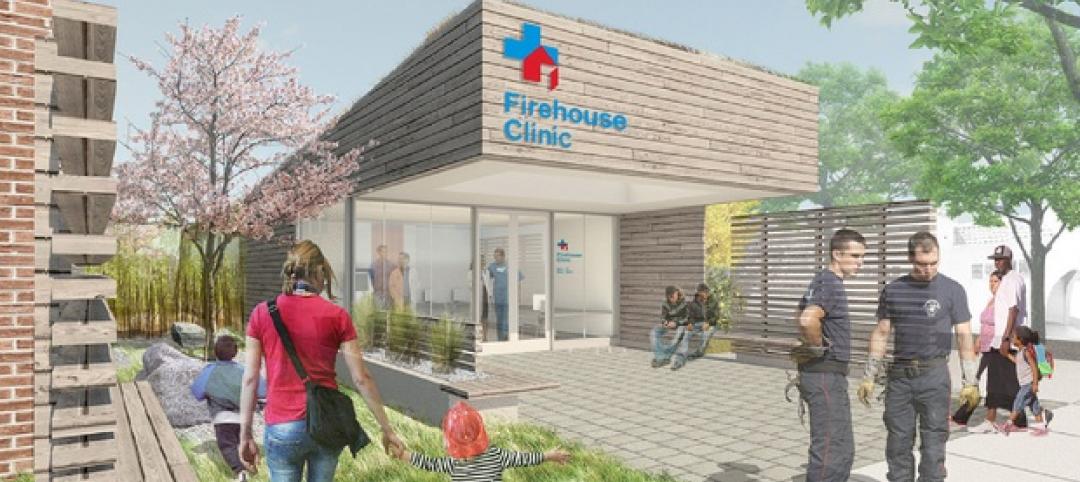Among the 25 cities in the U.S. with the largest homeless populations, the only city in Florida is Miami, with roughly 3,700 homeless, or 8.1 people per 1,000, according to U.S. News and World Report. Local agencies and programs such as Camillus House’s Lazarus Project and the Miami Permanent Supportive Housing Program target individuals suffering from mental illness that experts identify as one of the root causes of homelessness.
A team that included SBLM Architects recently completed the renovation and conversion of a vacant seven-story, 180,000-sf building—which had previously served as a mental health evaluation and treatment center—into the Miami Center for Mental Health and Recovery, whose goal is to divert individuals with serious mental problems from the criminal justice system to a facility where they can receive proper care and treatment, and possibly transition into more stable housing.
The Miami Center is a response to the Baker Act, a Florida law passed in 1971 that enables families and loved ones to provide emergency mental health services and temporary detention for people who are impaired because of their mental illness, and who are unable to determine their needs for treatment.
The revamped, 208-bed Miami Center, which in late December received its Temporary Certificate of Occupancy, is unique in that its first floor, where detainees are processed and evaluated, includes a Hearing Room with judge and magistrate chambers for related hearings and legal proceedings.
SBLM’s design, in fact, was “conceived” by Judge Steven Leifman, Associate Administrative Judge in the criminal division of Florida’s 11th Circuit Court. “The judge has been the driving force behind this,” confirms Jim Cohen, a Vice President with Miami-based SBLM Architects, who spoke with BD+C yesterday. Judge Leifman was also instrumental is raising funds for this Center.
Bureaucratic snags delay development
Cohen recounts that the “mental health diversion” concept emerged in 2010 after an expose in the mid 2000s revealed that Miami-Dade County's Correctional Department wasn’t equipped to provide the care needed by mentally ill inmates.
At first, the plan was to use only a couple of floors in the building, which was built in 1980. That morphed into a design-build project that at one point had Johnson Controls offering to pay for the entire renovation if its systems were installed. (The county declined that offer.)
The county hired SBLM in 2015, and Cohen says now that the building provided the “backbone and space to realize the judge’s vision.” The building team on this $52 million renovation project included Thornton Construction Company (GC), Bliss & Nyitray (SE) TWR Engineers (MEP), and TLC Engineering for Architecture (technology).
A continuum of care

After the intake and evaluation processes, an individual is moved into Crisis Stabilization Unit on the second floor with 16 beds, outpatient clinics, 15 offices for support services, and a conference center for professional and educational training (including law enforcement training specifically for this population). The second floor also has a “respite area” for persons who don’t meet the Center’s crisis criteria but have nowhere else to go.
There’s a secure wing on the second floor for residents that includes a gym, a multipurpose day room, visitation areas, and access to a 33,000-sf outdoor recreation space with landscaping, seating, a walking path, and basketball courts.
Mechanical equipment is on the third floor, which also serves as a physical and acoustical buffer from the resident sleeping areas on floors four through six. (The seventh floor hasn’t been built out yet.) Each resident floor has six to eight sleep pods that allow patient care to be segmented. A maximum of five beds per resident floor may be assigned to that floor’s private bathroom.
Resident floors have dedicated support areas for pharmacies, exam rooms, professional therapy offices, laundries, and dining. As a resident’s condition stabilizes, there can be relocations to higher floors that provide independent living opportunities. As such, Miami Center claims to be the first of its kind in the country that offers a continuum of healthcare for the mentally ill that includes the prospect of reintegrating into society.
Treatment instead of detention
The custodial component, says Cohen, can last up to six months. If the patient shows improvement, he or she is eligible for longer-term houisng on floors five and six. At that stage, a patient can opt to leave the program.
The opening of the Miami Center, which will cost $30 million per year to run, is projected to save Miami-Dade County $100,000 per person annually by providing treatment programs to mentally ill people who otherwise would be held for extended periods in county detention facilities. Cohen says he’s been contacted by the city of Seattle about Miami-Dade’s diversion efforts, and notes that Judge Leifman has toured the facility with representatives from other cities.
Cohen adds that the first floor of the building includes a commercial kitchen that, once operational, could provide patients with training applicable to the food service industry.
Related Stories
| Jul 8, 2014
Fast-track naval hospital sparks sea change in project delivery [2014 Building Team Awards]
Through advanced coordination methods and an experimental contract method, the Building Team for Camp Pendleton’s new hospital campus sets a new standard for project delivery.
| Jul 7, 2014
Team unity pays off for a new hospital in Maine [2014 Building Team Awards]
Extensive use of local contractors, vendors, and laborers brings a Maine hospital project in months ahead of schedule.
| Jul 7, 2014
7 emerging design trends in brick buildings
From wild architectural shapes to unique color blends and pattern arrangements, these projects demonstrate the design possibilities of brick.
| Jul 7, 2014
A climate-controlled city is Dubai's newest colossal project
To add to Dubai's already impressive portfolio of world's tallest tower and world's largest natural flower garden, Dubai Holding has plans to build the world's largest climate-controlled city.
| Jul 2, 2014
The doctor is in the firehouse: New clinic to be built in California fire station
Designed by WRNS Studio, the Firehouse Clinic will encourage local residents with limited healthcare access to consider them as an alternative to the emergency room, especially for preventive care.
| Jul 2, 2014
Emerging trends in commercial flooring
Rectangular tiles, digital graphic applications, the resurgence of terrazzo, and product transparency headline today’s commercial flooring trends.
| Jun 30, 2014
Research finds continued growth of design-build throughout United States
New research findings indicate that for the first time more than half of projects above $10 million are being completed through design-build project delivery.
| Jun 25, 2014
Frank Lloyd Wright’s Spring House, Cincinnati’s Union Terminal among 11 Most Endangered Historic Places for 2014
The National Trust for Historic Preservation released its annual list of 11 Most Endangered Historical Sites in the United States for 2014.
| Jun 20, 2014
Sterling Bay pulled on board for Chicago Old Main Post Office project
Sterling Bay Cos. and Bill Davies' International Property Developers North America partner up for a $500 million restoration of Chicago's Old Main Post Office
| Jun 18, 2014
Design tips for Alzheimer care facilities
A new white paper from the Alzheimer’s Foundation of America and Perkins Eastman details best design practices for residential care settings for individuals living with Alzheimer’s disease.
















